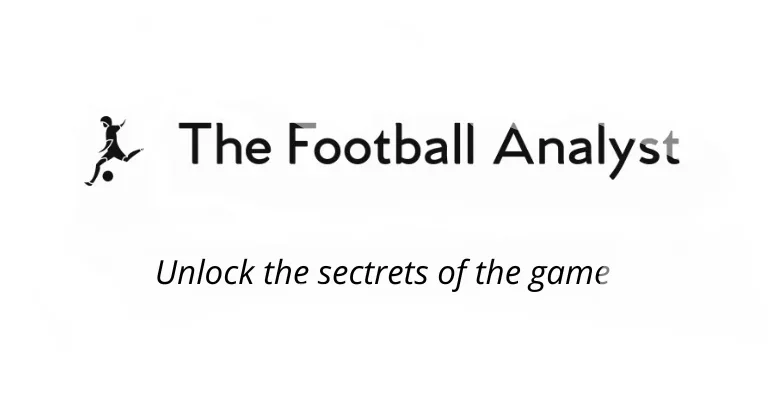Football is a game of roles, not just positions. Two players might both be labeled as “fullbacks,” yet one acts as a wide runner constantly overlapping the winger, while another tucks into midfield as an auxiliary playmaker. Traditional scouting categories — goalkeeper, center-back, fullback, midfielder, forward — are too broad to capture these differences.
Role profiles solve this problem. They break down positions into functional roles, then map these roles to data-driven attributes that can be consistently measured, tracked, and compared.
In modern recruitment and player development, role profiles built with data help answer the key question: What do we need from this position in our game model, and how can we find players who fit it?
Why Data-Driven Role Profiles Matter
Without data, role profiles remain theoretical. With data, they become practical tools that allow analysts, scouts, and coaches to:
- Translate tactical principles into quantifiable metrics.
- Create consistent player comparisons across leagues and contexts.
- Spot undervalued or misused players by aligning them with alternative role profiles.
- Benchmark academy players against first-team requirements.
- Support evidence-based recruitment decisions rather than intuition alone.
In short, data allows clubs to move from “this player looks like he fits our role” to “this player’s output aligns with our defined role benchmarks.”
Step 1: Role Definition Through Tactical Lens
The starting point for any role profile remains tactical. The coach’s game model dictates what a role should accomplish. For example, consider a central midfielder:
- In one system, the role may demand deep build-up play, progressive passing, and tempo control.
- In another, the same “midfield” slot may require pressing intensity, ground coverage, and ball-winning ability.
The tactical lens ensures role profiles are not generic but context-specific.
Step 2: Mapping Tactical Tasks to Data Metrics
Once responsibilities are clear, they must be translated into measurable actions. This is where data adds structure. For each tactical task, select metrics that capture performance.
For example, an “Inverted Fullback” role might map as follows:
- Build-up contribution: Progressive passes, passes into the final third, central receptions under pressure.
- Defensive compactness: Interceptions in central areas, recoveries in midfield zones, defensive duels in half-spaces.
- Physical requirements: High-intensity runs, repeat sprint ability.
Crucially, not all metrics are equally important. A structured profile prioritizes core identity metrics (those that define the role) and separates them from supporting metrics (useful but not defining).
Step 3: Establishing Benchmarks and Thresholds
One of the biggest advantages of using data in role profiling is benchmarking. Instead of looking at raw outputs, analysts can:
- Establish percentile cutoffs for each metric (e.g., top 25% of progressive passes among fullbacks in the league).
- Use z-scores or standardized values to compare across leagues.
- Create “role archetypes” based on clusters of players with similar profiles.
This makes it possible to say: To be an effective inverted fullback in our system, a player should average at least X progressive passes per 90 and rank in the top 30% for central receptions.
Benchmarks transform role profiles from descriptive documents into measurable filters for scouting.
Step 4: Building Data Pipelines
To operationalize role profiles, clubs often set up data pipelines that:
- Continuously update player metrics from providers (e.g., event data, tracking data, physical data).
- Apply filters that align with role requirements (e.g., only show fullbacks with >5 progressive passes per 90 and >3 central recoveries).
- Rank and cluster players into role-based shortlists.
This automation allows analysts and scouts to instantly identify potential fits rather than starting from scratch for every search.
Step 5: Integrating Video and Context
Data can narrow the field, but it cannot fully capture how a player executes tasks. For example, two players may both complete six progressive passes per game, but one might do it with high risk under pressure, while the other does it in unopposed scenarios.
The best practice is:
- Use data to define and filter for role profiles.
- Use video to validate tactical fit, technical execution, and decision-making quality.
This ensures efficiency without losing nuance.
Challenges in Data-Driven Role Profiles
While powerful, this process has limitations:
- System dependency: A player’s data reflects their current role and tactical environment. A defensive fullback in a low-block won’t produce inverted fullback metrics, even if they have the potential.
- Overfitting: Too strict a benchmark can eliminate creative solutions or adaptable players.
- Data availability: Some key tasks (e.g., positioning, off-ball runs) require tracking data, which not all clubs have access to.
Successful clubs balance precision with flexibility — using data to guide, but not dictate, decisions.
Practical Applications
Data-driven role profiles support several areas of the modern game:
- Recruitment: Filters potential signings based on tactical fit.
- Player development: Benchmarks academy players against role requirements.
- Squad building: Ensures diversity of roles within a squad (e.g., two types of midfielders rather than duplicates).
- Opposition analysis: Identifies opponent player tendencies by role profile.
Conclusion
Creating role profiles with data is about turning tactical clarity into measurable frameworks. By defining roles, mapping them to metrics, setting benchmarks, and integrating them into pipelines, clubs can move beyond generic positional scouting toward role-specific recruitment and development.
The result is alignment: coaches, analysts, and scouts all working from the same structured language. Instead of debating vague impressions, they can measure performance against predefined role expectations.
In a football landscape where competitive advantage increasingly comes from marginal gains, role profiles built with data are not just an analytical luxury — they are a necessity.
